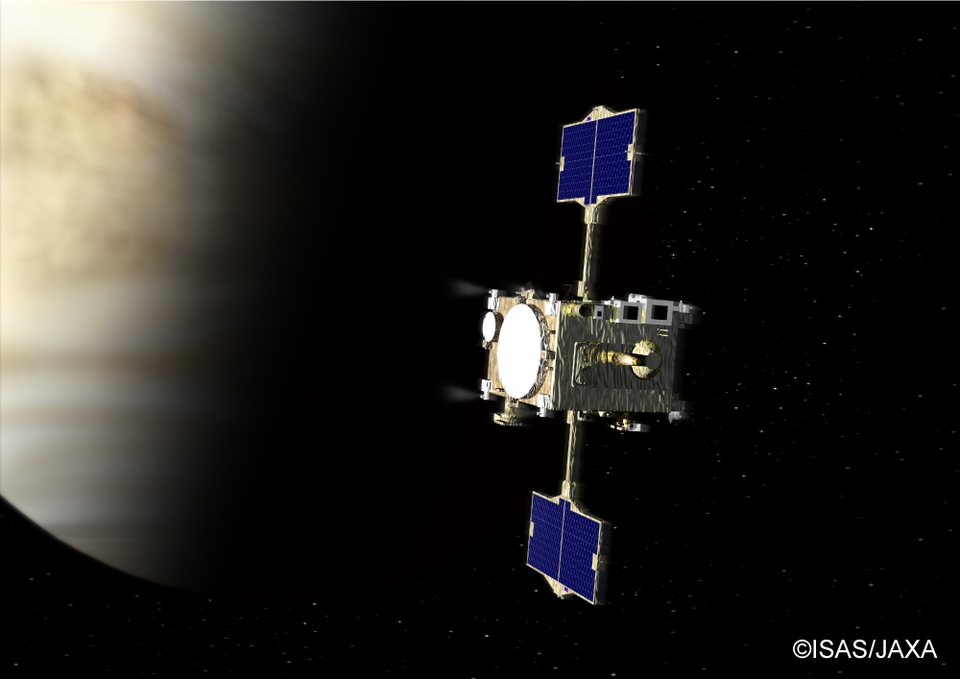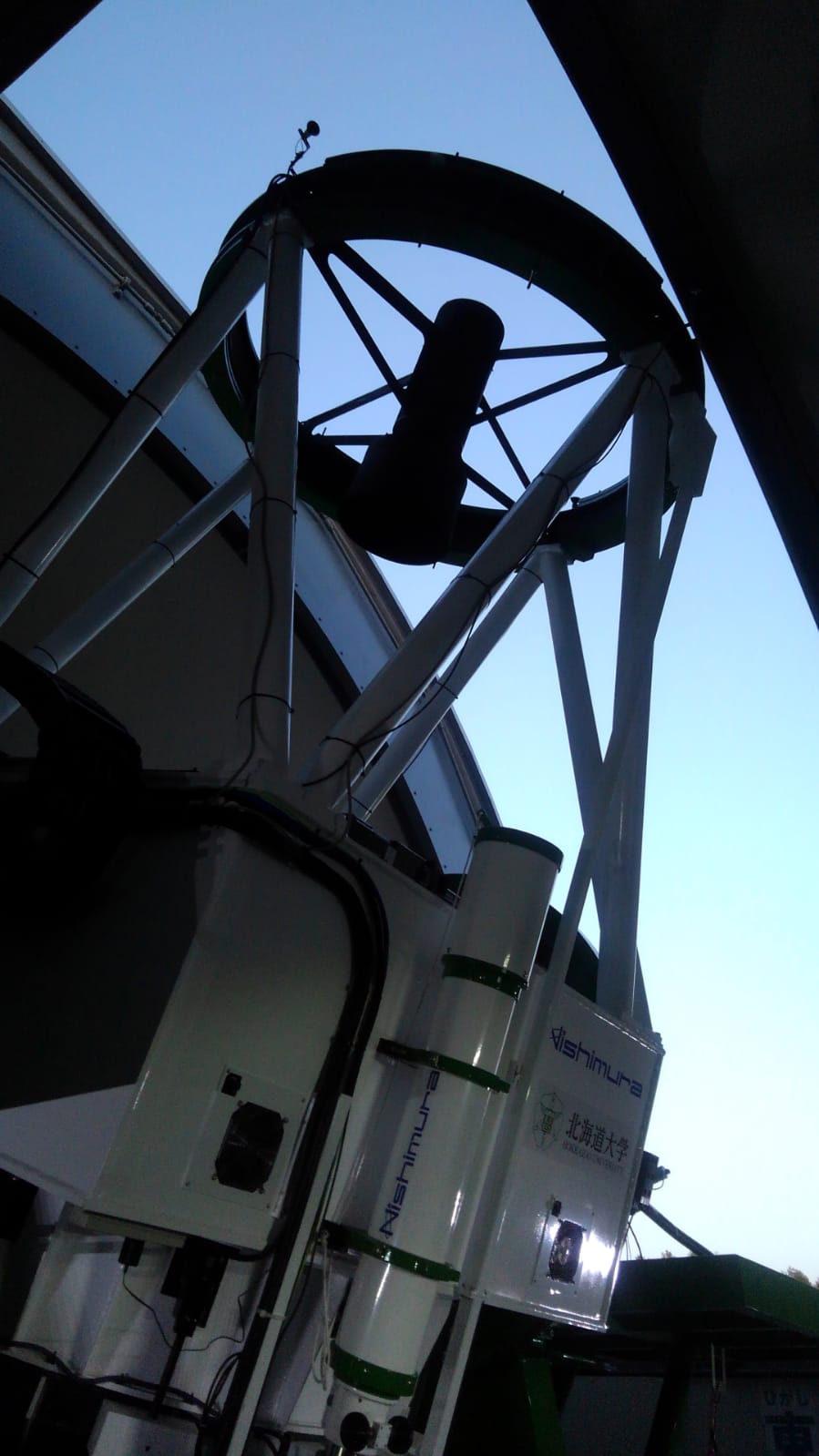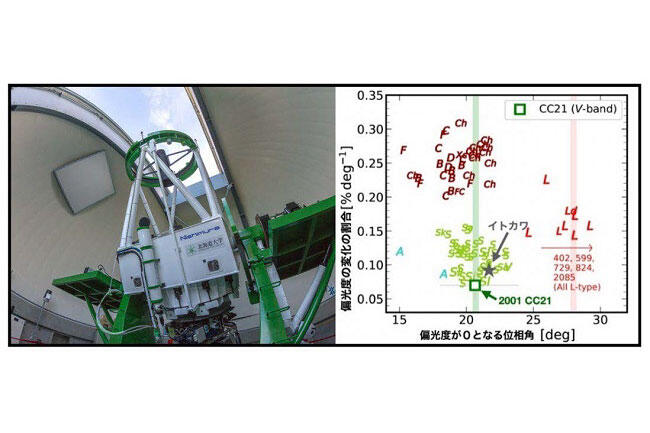TAKAGI Seiko
Lecturer
Venus, evolved separately from Earth
Department of Earth and Planetary Sciences, Cosmosciences

| Theme | Study of physical and chemical mechanism of Venus cloud and atmospheric dynamics |
| Field | Earth and planetary sciences, Planetary Meteorology, Space and upper atmospheric physics |
| Keyword | Planetary Atmosphere, Planetary exploration, Telescope, Planetary Science |
Introduction of Research
Venus is our nearest neighbor, and has a size very similar to the Earth’s. However, previous observations discovered an extremely dense (90 bar at the surface) and CO2-rich atmosphere, with H2SO4 thick clouds. The Venus cloud consists of H2SO4 main cloud deck at 45 – 70 km, with thinner hazes above and below. The upper haze on Venus lies above the main cloud surrounding the planet, ranging from the top of the cloud (70 km) up to as high as 90 km.
The Solar Occultation at InfraRed (SOIR) on board Venus Express (ESA, 2006-2014) is designed to measure the atmospheric transmission at high altitudes (70 – 220 km) in the IR wavelength (2.2 – 4.3 µm) with high resolution by solar occultation. The SOIR data obtained in 2006 – 2009 are analyzed to examine the upper haze at altitude above 90 km. Vertical and latitudinal distribution of haze extinction, optical thickness, and mixing ratio are calculated in using SOIR data statistically. Extinctions and optical thickness at low latitude are two times thicker than those of high latitude. One of the notable results is that mixing ratios increase at altitude above 90 km at both high and low latitudes. It is speculated that sources of haze are transported upward from under altitude 90 km and haze is produced at high altitude. From comparison with the vertical distributions of SO and SO2 mixing ratios reported by previous study, it is speculated about the correlation between sulfuric compound and haze.
On December 7, 2015, AKATSUKI (Fig.1, JAXA, 2010-) arrived at Venus after orbit insertion. After the Venus orbit insertion, many Venus images were taken by some instruments onboard AKATSUKI. In this study, cloud optical thickness variation are investigated from Venus dayside images taken by IR1(1 µm camera onboard AKATSUKI) and PIRKA telescope(Fig.2) and radiative transfer calculation globally. Furthermore, we will examine Venus meteorological some change that contribute to cloud variation.
Representative Achievements
Seiko Takagi, Arnaud Mahieux, Valérie Wilquet, Séverine Robert, Ann Carine Vandaele and Naomoto Iwagami,
Earth, Planets and Space, 71:124, 2019.
Naomoto Iwagami, Takeshi Sakanoi, George L. Hashimoto, Kenta Sawai, Shoko Ohtsuki, Seiko Takagi, Kazunori Uemizu, Munetaka Ueno, Shingo Kameda, Shin‐ya Murakami, Masato Nakamura, Nobuaki Ishii, Takumi Abe, Takehiko Satoh, Takeshi Imamura, Chikako Hirose, Makoto Suzuki, Naru Hirata, Atsushi Yamazaki, Takao M. Sato, Manabu Yamada, Yukio Yamamoto, Tetsuya Fukuhara, Kazunori Ogohara, Hiroki Ando, Ko‐ichiro Sugiyama, Hiroki Kashimura and Toru Kouyama,
Earth, Planets and Space, 2018.
T. Fukuhara, M. Futaguchi, G. L. Hashimoto, T. Horinouchi, T. Imamura, N. Iwagaimi, T. Kouyama, S. Murakami, M. Nakamura, K. Ogohara, M. Sato, T. M. Sato, M. Suzuki, M. Taguchi, S. Takagi, M. Ueno, S. Watanabe, M. Yamada, and A. Yamazaki,
Nature Geoscience 10, 85-88, 2017.
Seiko Takagi and Naomoto Iwagami,
Earth, Planets and Space 63(5) 435-442, 2011.
Naomoto Iwagami, Seiko Takagi, Munetaka Ueno, Shoko Ohtsuki, Takeshi Sakanoi and George L.Hashimoto,
Earth, Planets and Space 63(6) 487-492, 2011.
| Academic degree | Ph.D. of Science |
| Academic background | 2008 Bachelor of Science, Department of Geophysics, Hokkaido University 2010 Master of Science, Department of Earth and Planetary Physics, the University of Tokyo 2014 Doctor of Philosophy in Science, Department of Earth and Planetary Physics, the University of Tokyo 2014-2017 Program Specific Researcher, Tokai University 2017-2022 Assistant Professor, Hokkaido University 2022- present position |
| Affiliated academic society | Japan Geoscience Union (JpGU), Society of Geomagnetism and Earth, Planetary and Space Sciences (SGEPSS), American Geophysical Union (AGU), European Geosciences Union (EGU), The Meteorological Society of Japan |
| Project | Optical and Infrared Synergetic Telescopes for Education and Research Venus Climate Orbiter AKATSUKI |
| Room address | General Research Building 8. 8-210 |




